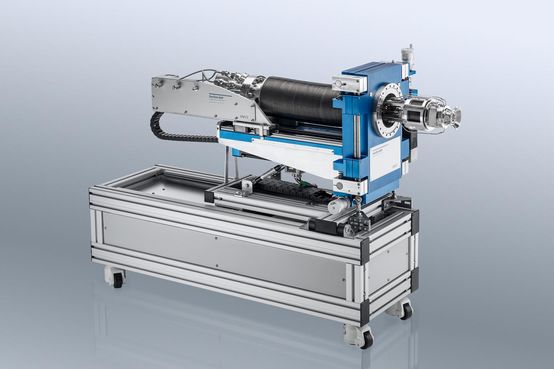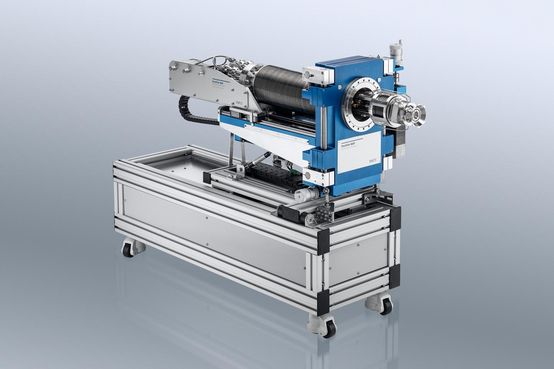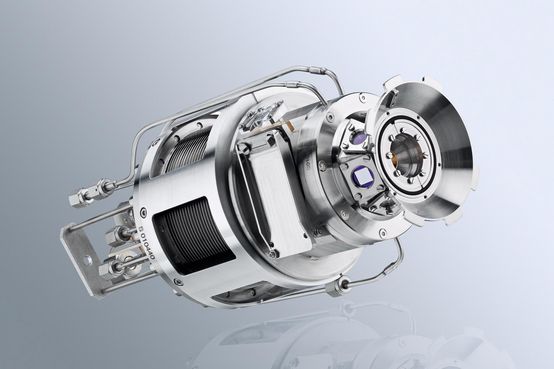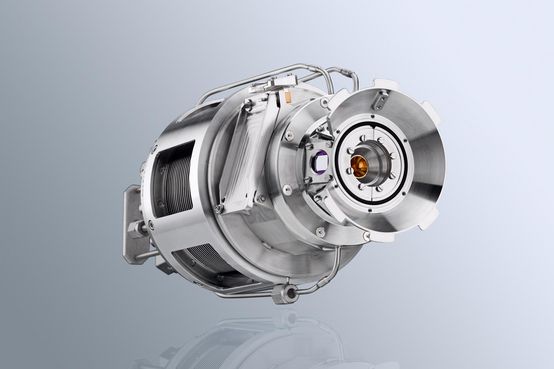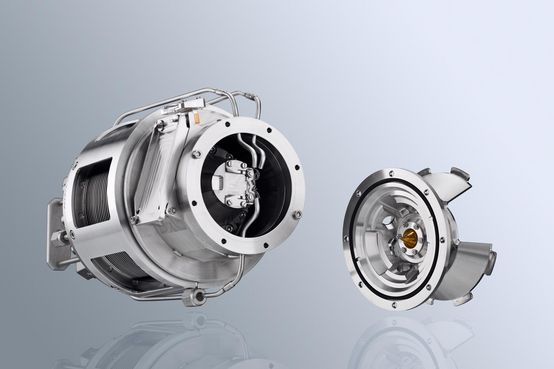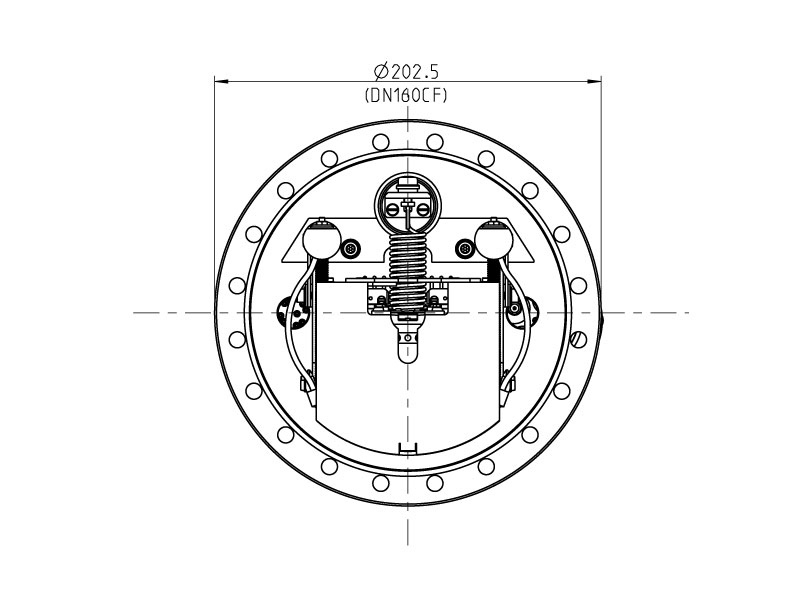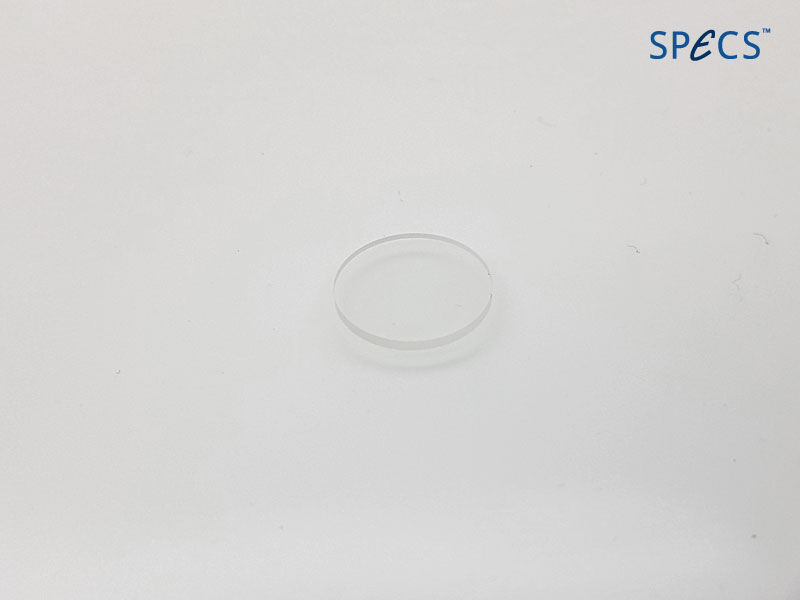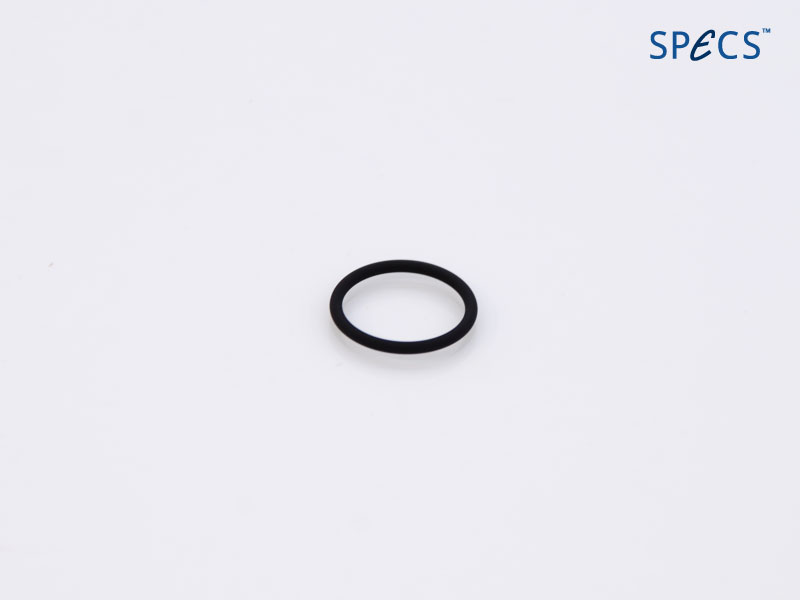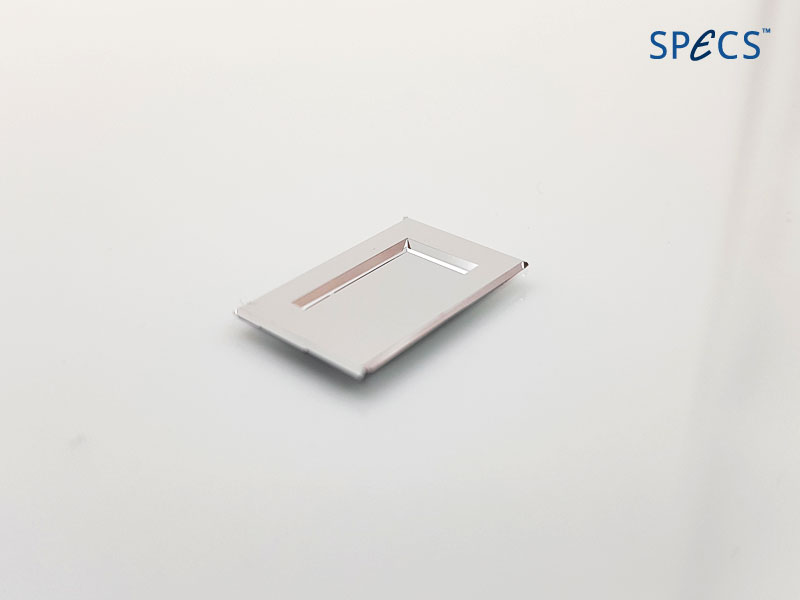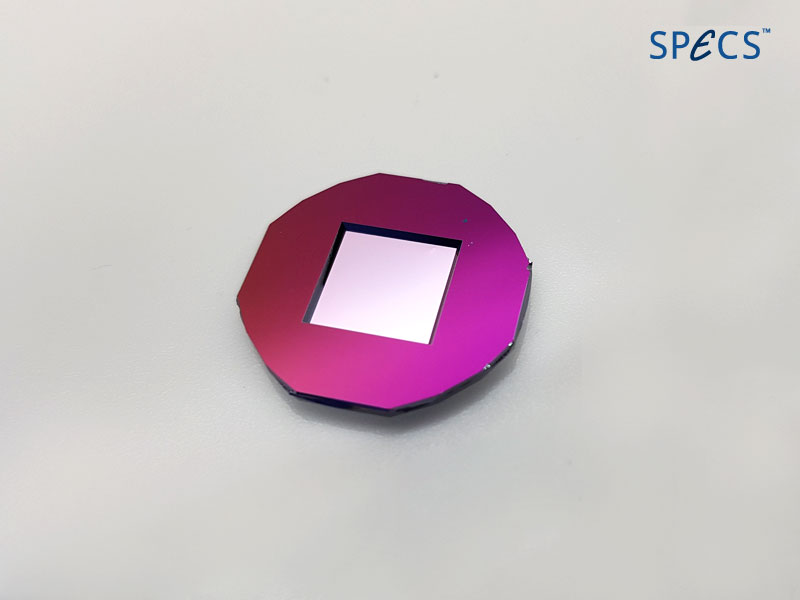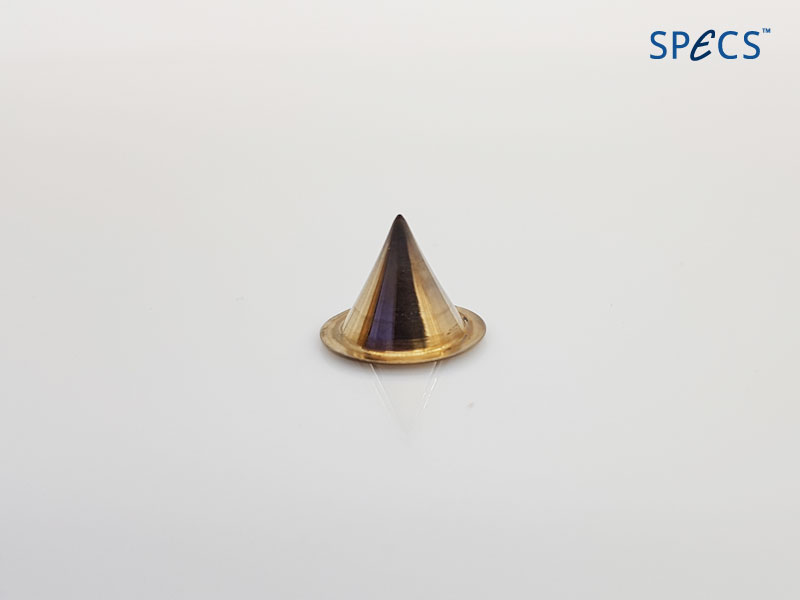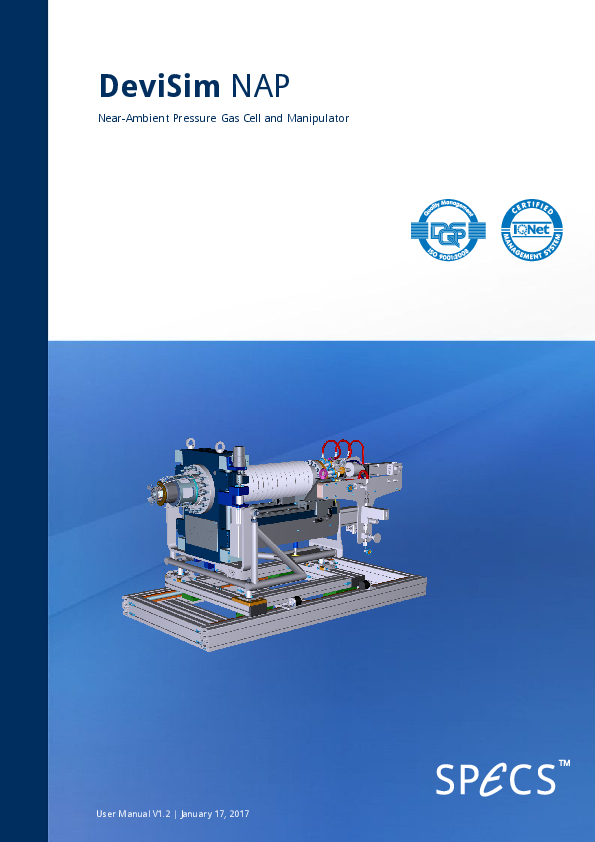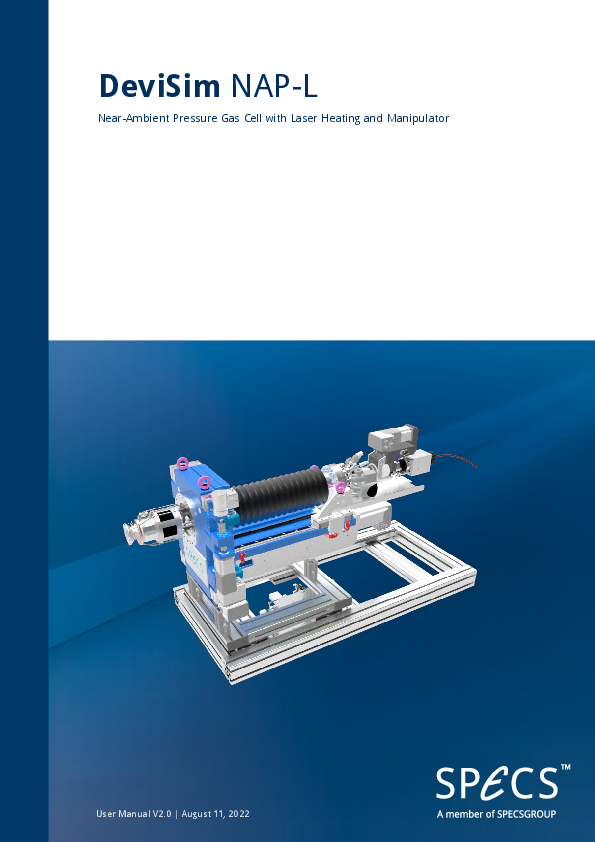 Detail
DetailDeviSim NAP
DeviSim NAP Reactor Cell at Near Ambient Pressure Conditions for Direct Coupling to PHOIBOS 150 NAP
DeviSim NAP is a reactor cell of 400 ml volume at near ambient pressure conditions that can directly be coupled to the PHOIBOS 150 NAP. It is built on a manipulator which is docked into the UHV analysis chamber with PHOIBOS 150 NAP analyzer. It designed for a fast sample transfer. The cell includes a gas inlet system suitable for a wide range of gases. The sample heating mechanism allows for heating up to 600 °C at 20 mbar of N2 pressure and cooling with liquid Nitrogen down to at least 200 K and a gas handling system.
The XPS-NAP coupling will permits to acquire XPS spectra at pressures up to 25 mbar at a high signal/noise ratio. The DeviSim NAP allows near ambient pressure XPS measurements at pressures ≥30 mbar for N2.
Offered in-situ near ambient pressure NAP cell is fully compatible with the existing NAP XPS instruments provided by SPECS.The compatibility includes mechanical attachment interfaces including connection to the differentially pumped hemispherical analyzer, electrical connections and interlocking, UHV and elevated pressure control and control software, and minimal mutual disturbance in operation.
KEY FEATURES
- Powerful and easy to use in systems for studies under near ambient pressure conditions
- Combination with high performance PHOIBOS 150 NAP electron analyzer
- Designed for perfect control of the sample environment
- Optional IR laser heating in gaseous environments
- Optional Peltier cooling in gaseous environments
- Customizable gas handling systems
SPARE PARTS
Replacment window for DeviSIM NAP cell view ports. 14 mm diameter

Replacement filament for DeviSIM NAP cell e-beam heating

Replacement O-Ring for DeviSIM NAP cell view port. 14 mm diameter. 2 pieces needed

Replacement O-Ring for DeviSIM NAP cell view port for XR-MF-window 16 x 10 mm. 2 pieces needed.
Replacement O-Ring for DeviSIM NAP cell view port for XR-50-window 19 x 19 mm. 2 pieces needed
Replacment SiNi window for DeviSIM NAP cell XR-MF port. 16 x 10 mm. Aluminum coated (100 nm)
Replacment SiNi window for DeviSIM NAP cell XR-50 port. 19 x 19 mm
Replacement nozzle for 300 µm for DeviSIM NAP cell. 25 mbar. Other opening dimensions on request available.

Replacement UVS window for DeviSIM NAP cell UVS300 with ETC capillary
